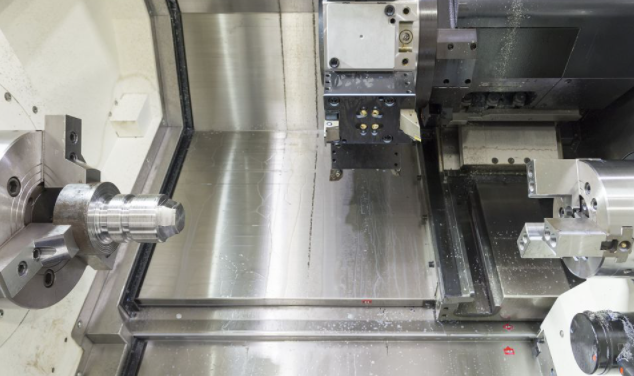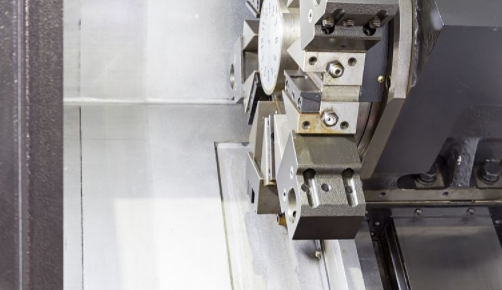Precision machining and fabrication are critical manufacturing processes that produce high-accuracy components with tight tolerances. These techniques are essential in industries such as aerospace, medical, automotive, and electronics, where exact specifications ensure performance, safety, and reliability. This article provides a detailed examination of the processes, equipment, materials, and quality control measures involved in precision machining and fabrication.
Understanding Precision Machining
Precision machining is a subtractive manufacturing process that removes material from a workpiece to achieve specific dimensions and tolerances. It relies on advanced machinery, primarily computer numerical control (CNC) systems, to produce parts with accuracies often within ±0.0001 inches (±0.00254 mm). The process is distinguished by its ability to handle complex geometries and maintain consistent quality across high-volume production.
CNC machines, including lathes, mills, and grinders, are programmed using computer-aided design (CAD) and computer-aided manufacturing (CAM) software. These systems translate digital designs into precise tool paths, ensuring repeatability and minimizing human error. Common precision machining methods include milling, turning, drilling, and electrical discharge machining (EDM).
| Method | Description | Tolerance Range | Common Applications |
|---|---|---|---|
| CNC Milling | Uses rotary cutters to remove material in multiple axes | ±0.0005 to ±0.005 inches (±0.0127 to ±0.127 mm) | Aerospace components, molds |
| CNC Turning | Rotates workpiece against a stationary cutting tool | ±0.0002 to ±0.001 inches (±0.00508 to ±0.0254 mm) | Shafts, bushings |
| EDM | Uses electrical sparks to erode material | ±0.0001 to ±0.0005 inches (±0.00254 to ±0.0127 mm) | Complex dies, hard metals |
Key Equipment in Precision Machining
The backbone of precision machining is advanced equipment designed for high accuracy and repeatability. CNC machines dominate due to their programmability and multi-axis capabilities. For example, 5-axis CNC machines allow simultaneous movement in five directions, enabling the creation of complex geometries in a single setup. These machines are equipped with high-speed spindles (up to 30,000 RPM) and precision tool holders to minimize runout.
Swiss-type lathes are another critical tool, particularly for small, intricate parts. They feature a sliding headstock and guide bushing, providing exceptional stability for long, slender components. Typical tolerances for Swiss machining range from ±0.0002 to ±0.0005 inches (±0.00508 to ±0.0127 mm). Additionally, laser machining systems use high-frequency beams for cutting or engraving, suitable for both metals and non-metals, with cutting widths as small as 0.001 inches (0.0254 mm).
Tooling is equally important. Diamond-tipped tools are used for ultra-precision applications, achieving surface roughness values as low as 9.2 nm Sa. These tools require regular inspection to maintain edge sharpness, as even minor wear can affect dimensional accuracy.
Fabrication Techniques in Precision Manufacturing
Precision fabrication complements machining by assembling or forming components through processes like welding, bending, and cutting. Unlike machining, which is subtractive, fabrication often involves additive or forming techniques to create structures from raw materials such as sheet metal, tubes, or plates.
Laser cutting is a widely used fabrication method, offering high precision with kerf widths as narrow as 0.006 inches (0.15 mm). It is ideal for creating intricate patterns in materials like stainless steel, aluminum, and titanium. Another key technique is precision welding, such as TIG (Tungsten Inert Gas) welding, which provides strong, clean welds with minimal distortion. Weld bead widths can be controlled to within 0.04 inches (1 mm) for critical applications.
Forming processes, such as stamping and bending, are used to shape metal sheets into precise configurations. CNC press brakes, for instance, achieve bend angles with an accuracy of ±0.5 degrees, ensuring consistency in large-scale production.
Material Selection for Precision Machining and Fabrication
Material choice significantly impacts the success of precision machining and fabrication. Common materials include metals like aluminum, stainless steel, titanium, and copper alloys, as well as engineering plastics such as PEEK and nylon. Each material presents unique machining characteristics.
- Aluminum: Lightweight, corrosion-resistant, and easy to machine. Commonly used in aerospace for parts like manifolds. Typical machining speeds: 600–1,200 SFM (surface feet per minute).
- Stainless Steel: High strength and corrosion resistance but prone to work hardening. Requires slower cutting speeds (100–300 SFM) and robust tooling.
- Titanium: Excellent strength-to-weight ratio but difficult to machine due to low thermal conductivity. Cutting speeds range from 50–150 SFM.
- PEEK: High-performance plastic with chemical resistance, suitable for medical implants. Machining requires coolant to prevent melting, with speeds of 200–400 SFM.
Material selection must consider factors like mechanical properties, thermal stability, and compatibility with machining processes to ensure dimensional accuracy and surface quality.
Quality Control and Metrology
Quality control is integral to precision machining and fabrication, ensuring components meet stringent specifications. Metrology tools, such as coordinate measuring machines (CMMs), provide non-contact measurements with accuracies up to ±0.00004 inches (±0.001 mm). White light interferometry is used to assess surface roughness, achieving resolutions down to 0.1 nm.
Key quality control parameters include:
- Dimensional Accuracy: Measured against tolerances specified in CAD models, typically ±0.0001 to ±0.005 inches (±0.00254 to ±0.127 mm).
- Surface Roughness: Evaluated using parameters like Ra (average roughness) and Rz (maximum height). Precision machining targets Ra values of 0.025–0.8 µm.
- Material Integrity: Inspected for subsurface damage or cracks, particularly in brittle materials like ceramics or glass.
In-process monitoring, such as tool condition monitoring (TCM), uses sensors to detect wear or vibration, ensuring consistent performance. Statistical process control (SPC) is applied to track production trends and maintain repeatability.
Applications Across Industries
Precision machining and fabrication serve a wide range of industries, each with unique requirements for accuracy and durability.
| Industry | Applications | Key Requirements |
|---|---|---|
| Aerospace | Turbine blades, landing gear, manifolds | Tight tolerances (±0.0005 inches), lightweight materials |
| Medical | Implants, surgical tools, orthotic devices | Biocompatibility, surface finish (Ra < 0.4 µm) |
| Electronics | Connectors, microchip substrates | Miniaturization, high conductivity |
| Automotive | Engine components, transmission parts | Durability, high-volume production |
In aerospace, precision machining produces components like turbine blades with complex cooling channels, requiring tolerances of ±0.0005 inches (±0.0127 mm). In the medical field, machining biocompatible materials like titanium for implants demands surface finishes with Ra values below 0.4 µm to ensure patient safety. Electronics manufacturing relies on precision fabrication for miniaturized components, while automotive applications prioritize durability and cost-efficiency.
Process Optimization and Efficiency
Optimizing precision machining and fabrication involves balancing speed, accuracy, and cost. Single-setup machining, enabled by multi-axis CNC systems, reduces cycle times by eliminating the need for multiple fixtures. For example, 5-axis machining can complete a complex aerospace part in one setup, compared to multiple setups on 3-axis machines, reducing production time by up to 30%.
Coolant systems are critical for managing heat in high-speed machining. Flood cooling or minimum quantity lubrication (MQL) systems maintain tool life and prevent workpiece distortion. For instance, MQL delivers 10–100 mL/hour of lubricant, compared to 10–50 L/min for flood cooling, improving efficiency in titanium machining.
Toolpath optimization, guided by CAM software, minimizes unnecessary movements, reducing cycle times by 15–20%. Adaptive control systems adjust cutting parameters in real-time based on sensor feedback, ensuring consistent quality in high-volume production.
Limitations and Considerations
While precision machining and fabrication offer unmatched accuracy, certain limitations must be addressed. Material hardness, such as in titanium or ceramics, can lead to tool wear, requiring frequent tool changes. For example, diamond tools machining silicon may wear after 100–200 hours of use, impacting cost. Additionally, thermal deformation in workpieces, caused by heat from high-speed cutting, can affect dimensional accuracy, necessitating precise cooling strategies.
Complex geometries may require multiple machining steps, increasing setup time and cost. For instance, deep cavities with corner radii below 0.01 inches (0.254 mm) can challenge tool accessibility, potentially requiring specialized equipment like micro-mills.
Ensuring consistent quality in high-volume production is another hurdle. Variations in raw material properties, such as grain size or hardness, can affect machining outcomes, requiring rigorous incoming material inspections.

Conclusion
Precision machining and fabrication are foundational to modern manufacturing, enabling the production of high-accuracy components for critical industries. By leveraging advanced CNC systems, specialized tooling, and rigorous quality control, these processes achieve tolerances as tight as ±0.0001 inches and surface finishes below 0.4 µm Ra. Material selection, equipment capabilities, and process optimization play pivotal roles in ensuring efficiency and reliability. Despite challenges like tool wear and thermal deformation, precision machining and fabrication remain indispensable for producing complex, high-performance parts.
